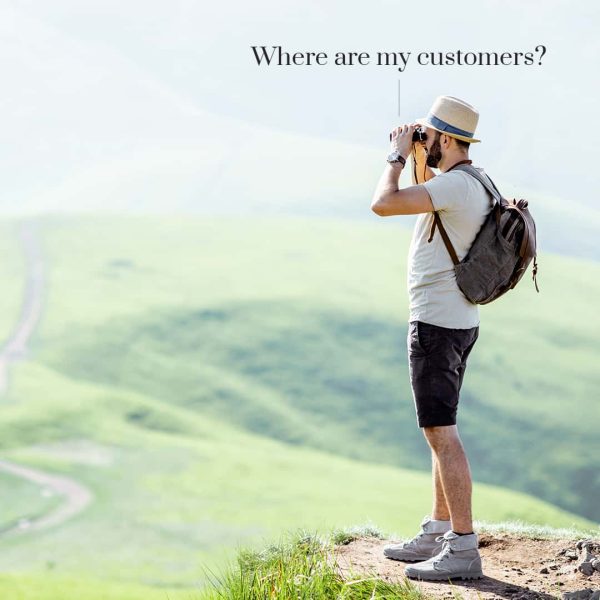The question is simple: “What makes a good website for a tour or activity operator?” And the answer is also simple: one which is aesthetically pleasing, informative, and functional. But in order to account for those three criteria, there are many moving parts that have to come together. Moreso all of these parts contribute to the overall website experience in their own way so it’s not a matter of prioritizing some while leaving others to the side.
While a good website may be taken for granted, a bad website will stand out in the worst way possible. There are different types of visitors who will land on your site, and with that knowledge, you should aim to appeal to all of them. From those who want to get straight to the point and prefer a quick skim, make the most important information available from the get-go. For the information-seekers who want as many details as possible, make that information accessible. For the visual people for whom reading is secondary, your photos should leave them in awe. Let’s break down a few fundamental points that transform a good website into one which will convince guests that they don’t need to look anywhere else.
Remember What Your Business Is
While it’s nice to get inspiration from other companies’ websites, make sure you’re looking for inspiration in the right place. If the business offers a product or service that has nothing to do with tours or activities, its design and layout are constructed to attract a different type of customer. A great tour website is not just about aesthetics, it’s about getting people to make bookings.
Understand Who Your Audience Is and What They Want
An essential part of a great website is understanding who your target audience is. Even if your tours have broad appeal, look to emphasize certain aspects which appeal to your specific audience. Whether it’s affordability, luxury, adventure, tranquillity, family-friendly (and the list goes on), make it clear from the onset which of those values your tours encompass. Rather than trying to be everything for everyone, look to highlight the most valuable and relevant characteristics.
Provide Intuitive Navigation
Again, when things work well they often go unnoticed or taken for granted. But when they don’t work well, site visitors not only have an unpleasant experience but they may be entirely turned off from booking your tour altogether. Intuitive navigation involves everything from the flow of information, the transition between different sections, where buttons or clickable options are located, and the overall interaction between the site and the visitor. Think of it like when you walk into a supermarket, you have a list of things you want to buy, and in general, from the first moment you walk through the door, you know exactly which aisle they’ll be in. The same logic should apply to your website. Visitors shouldn’t have to put in work to find information about your tours, your company, and be able to get answers to additional questions. If it’s not obvious, then it’s hidden.
Another absolute must is making sure your site is mobile friendly. With most of us constantly within arms reach of our mobile devices it’s crucial your site be just as attractive and functional for mobile users as desktop ones. Everything from menus, content, photos, should flow smoothly without taking longer to load and with all the information just as accessible as on a larger screen.
Menus and Footers
The main menu in the navigation bar is the first thing that visitors will see. Its job is to welcome your visitors and then clearly and concisely direct them to where they want to go. Depending on the number of tour offerings, if they take place in multiple locations or if there are multiple types of tours, a dropdown menu can feature only text or visuals to help navigate. While it may seem like a good idea to give your tour a 30-word elaborate and descriptive title, it certainly won’t fit well in any sort of menu. The footer similarly provides a summary of all the main pages, links, or contact information relevant for your business. Think of the footer as the nice bow which tops the metaphorical website package. For those who scroll all the way down, the footer provides a direct pathway to more information or material.
Remind People Why They’re On Your Site
To book your tours or activities of course! Call-to-action buttons (CTA) are the buttons located anywhere on your site (home page, landing page, or tour page) which not only act as a reminder but as a prompt for the visitor to complete an action. The buttons should stand out visually from the rest of the site in order to draw attention to them, and provide a clear command such as “Book Now”, “Sign Up Today” or “Add to Cart”. Sticky buttons (the buttons follow the user as they scroll down) means that they are always within clickable reach and the user doesn’t have to go scrolling through to find it again.
All Things Content
Content can be divided into two categories: all things visual, and all things textual:
Design
This isn’t just a matter of slapping in a few photos and calling it a day. The design includes photos, videos, fonts, colors, sizings, layout, order, styling, and dividers. And again, a great website doesn’t just look good—it has to function properly as well. All of the elements mentioned need to work together harmoniously to properly represent your brand, your tours, and to seamlessly direct people to that booking button. Don’t take for granted the colors and fonts, for example, the aesthetic for a multi-day adventure tour and a luxury boat cruise clearly have different ideal customers, and the website needs to reflect that in every element. When it comes to photos variety is key: showcase the places you visit on your tours, the city in which your tours take place, and also your guests having a great time on your tours.
Content
Headers, subheaders, descriptions, trip details, company information, and anything else written make up the content. While you may have a lot you want to say, take a deep breath. Be selective and precise in your phrasings in order to convey the right message in the best way possible. For example, large blocks of text can be a huge turn-off for those interested in getting straight to the point. For the no-nonsense visitor, make sure that essential information is clearly visible from the start. When it comes to your tour page, the goal should be to inform and entice prospective clients, but not give away everything and all your fun facts before they’ve taken the tour! Most importantly no one should ever land on your tour page and not immediately know the fundamental information: the price, the availability, and the tour length. From there you can further add on information such as meeting points, what to bring, what’s included, what’s not included.
Emphasize Credibility
An overlooked part of an excellent tour or activity website is credibility. There are various ways you can highlight your credibility through your website. Just because you have a well-designed site with engaging images and content, it doesn’t stop there. Use recent and verifiable reviews (such as ones where you can click through to the review site). Display any certifications or affiliations your business has (awards, sustainability partnerships, safety training, cultural association, and more). Put a face behind the name. Don’t underestimate the value of an “about us” section. Appeal to people’s human side by showing the person or people behind the brand, including your guides!
Once You Have Your Perfect Website, That’s Not the End
You’ve got your perfect website, you’ve made it! (or so you think). But having a great website doesn’t mean creating it and walking away. A great website, like many other things, still requires regular attention on both a content and technical level with regular maintenance ensuring that your site consistently provides the best experience possible. So if your reviews are dated five years ago, it’s definitely time for a refresh, and if your guests’ clothes clearly indicate the photo was taken fifteen years ago, look to feature a more recent one. If you’ve modified a tour, stopped offering a tour, or started offering a new tour, your website should always reflect that.
There’s more to a great site than just what you can see. Another major aspect of a successful website is everything that happens on the backend. When it comes to all things technical your site should undergo regular checks for system updates, theme and plugin updates, speed tests, track SEO rankings, make sure all the links are functional, as well maintain site security. Don’t let your dream site fade into chaos and dysfunction, keep it up to date!
When it comes to websites Tourism Tiger specializes in sales-focused web design for tour and activity operators. From design, content, and all things technical they work with you through all stages of the process, as well as after launch regardless of how big or small a site or what type of tours you offer. Over 200 tour and activity operators around the globe have chosen Tourism Tiger for their website needs. Check out their diverse portfolio and get in touch with them today!
Need more free advice?
Chris and his team will send you a weekly email offering high-value insight and advice about a variety of marketing and business development topics related to the tourism industry. We address specific destinations, tours and activities, and the hotel industry. We also provide important travel industry news and updates.

